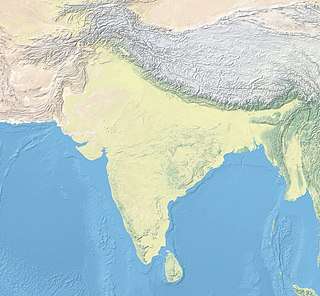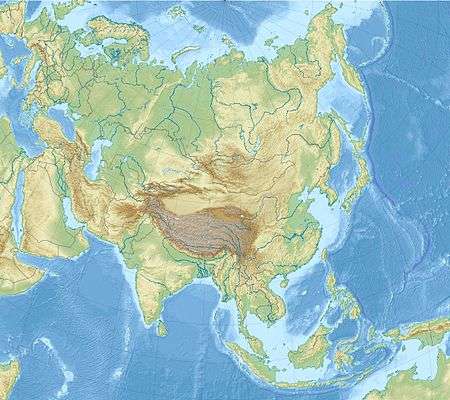Major Pillar Edicts
| Major Pillar Edicts of Ashoka | |
|---|---|
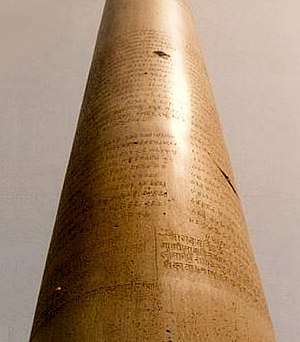 Major Pillar Edicts on the Delhi-Topra pillar. | |
| Material | Sandstone |
| Created | 3rd century BCE |
| Present location | India, Afghanistan |
|
| |
| Part of a series on the |
| Edicts of Ashoka |
|---|
The Major Pillar Edicts of Indian Emperor Ashoka refer to seven separate major Edicts of Ashoka inscribed on columns, the Pillars of Ashoka, which are significantly detailed and are among the earliest dated inscriptions of any Indian monarch. A full English translation of the Edicts was published by Romilla Thapar.[1]
These edicts are preceded chronologically by the Minor Rock Edicts and the Major Rock Edicts, and constitute the most technically elegant of the inscriptions made by Ashoka. They were made at the end of the reign of Ashoka (reigned 262-233 BCE), from the years 26 and 27 of his reign, that is, from 237-236 BCE.[2] Chronologically they follow the fall of Seleucid power in Central Asia and the related rise of the Parthian Empire and the independent Greco-Bactrian Kingdom circa 250 BCE, and Hellenistic rulers are not mentioned anymore in these last edicts. The last Major Pillar Edicts (Edict No.7, exclusively on the Delhi-Topra pillar) is testamental in nature, making a summary of the accomplishments of Ashoka during his life.
History
Ashoka was the third monarch of the Maurya Empire in India, reigning from around 269 BCE.[3] Ashoka famously converted to Buddhism and renounced violence soon after being victorious in a gruesome Kalinga War, yet filled with deep remorse for the bloodshed of the war. Although he was a major historical figure, little definitive information was known as there were few records of his reign until the 19th century when a large number of his edicts, inscribed on rocks and pillars, were found in India, Nepal, Pakistan and Afghanistan. These many edicts were concerned with practical instructions in running a kingdom such as the design of irrigation systems and descriptions of Ashoka's beliefs in peaceful moral behavior. They contain little personal detail about his life.[3]
List of the Major Pillar Edicts
The Major Pillar Edicts of Ashoka were exclusively inscribed on the Pillars of Ashoka or fragments thereof, at Kausambi (now Allahabad pillar), Topra Kalan, Meerut, Lauriya-Araraj, Lauria Nandangarh, Rampurva (Champaran), and fragments of these in Aramaic (Kandahar, Edict No.7 and Pul-i-Darunteh, Edict No.5 or No.7 in Afghanistan)[4][5] However many pillars, such as the bull pillar of Rampurva, or the pillar of Vaishali do not have inscriptions.
These pillar edicts include:[1]
Major Pillar Edict I
Asoka’s principle of protection of the people
Major Pillar Edict II
Defines dhamma as a minimum of sins, many virtues, compassion, liberality, truthfulness and purity
Major Pillar Edict III
Abolishes sins of harshness, cruelty, anger, pride etc.
Major Pillar Edict IV
Deals with duties of Rajukas.
Major Pillar Edict V
A list of animals and birds which should not be killed on some days, and another list of animals which have not to be killed at all occasions. Describes the release of 25 prisoners by Asoka.
Major Pillar Edict VI
Dhamma Policy

Major Pillar Edict VII
Works done by Asoka for Dhamma Policy. He says that all sects desire both self-control and purity of mind.
Language of Inscriptions
Only one language was used on the pillars: Prakrit in the Brahmi script. A few derived inscriptions were made on rock in Aramaic, in areas of Afghanistan. The edicts are composed in non-standardized and archaic forms of Prakrit.
Description of the pillars
The Major Pillar Edicts of Ashoka are exclusively inscribed on the Pillars of Ashoka or fragments thereof, although many pillars, such as the bull pillar of Rampurva, or the pillar of Vaishali do not have inscriptions. A few other pillars (the pillars of Sanchi, Sarnath, Rummindei and Nigali Sagar) only have very short inscriptions (the "Schism Edicts", the "Queen's Edict", the "Rummindei Edict" and the "Nigali Sagar Edict"), forming the Minor Pillar Edicts.
The Major Pillar Edicts (excluding the two fragments of translations found in modern Afghanistan) are all located in central India.[6]
| Name | Map | Location | Pillar | Capital/ Close-up | Rubbing |
|---|---|---|---|---|---|
| Lauriya-Navandgarh | Located in Lauriya-Nandangarh, Bethia Google map Major Pillar Edicts 1-6.[7] 26°59′55″N 84°24′31″E / 26.998479°N 84.408476°E | 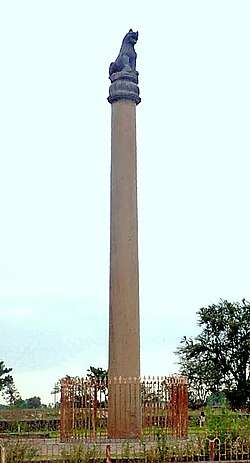 | 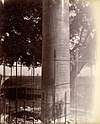 | 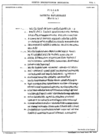 | |
| Allahabad | Allahabad Fort, Allahabad, Uttar Pradesh. Major Pillar Edicts 1-6.[7] Also has one Schism Edict and the "Queen Edict" Former location in Kosambi: 25°21′02″N 81°23′22″E / 25.350588°N 81.389549°E Current location in Allahabad: 25°25′52″N 81°52′30″E / 25.431111°N 81.87500°E |  | 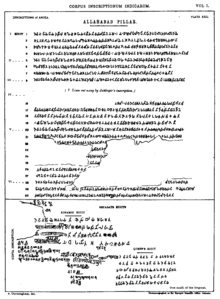 | ||
| Delhi-Topra | Located in Delhi, originally from Topra in Yamunanagar district, Haryana. Major Pillar Edicts 1-7.[7] Former location in Topra: 30°07′31″N 77°09′44″E / 30.1252°N 77.1623°E Current location in New-Delhi: 28°38′09″N 77°14′43″E / 28.635739°N 77.245398°E | 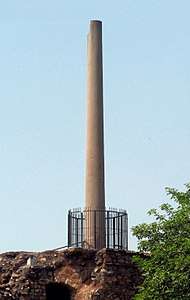 | 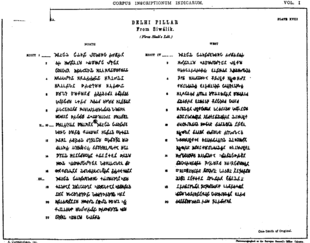 | ||
| Delhi-Meerut | Located in Delhi, originally from Meerut, Uttar Pradesh. Major Pillar Edicts 1-6.[7] Former location in Meerut: 28°59′N 77°42′E / 28.99°N 77.70°E Current location in Delhi: 28°40′26″N 77°12′43″E / 28.673853°N 77.211849°E | 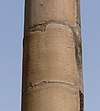 |  | ||
| Lauriya-Araraj | Located in Lauriya near Areraj, Bethia, Bihar, India. Major Pillar Edicts 1-6.[7] 26°33′01″N 84°38′51″E / 26.550227°N 84.647581°E | 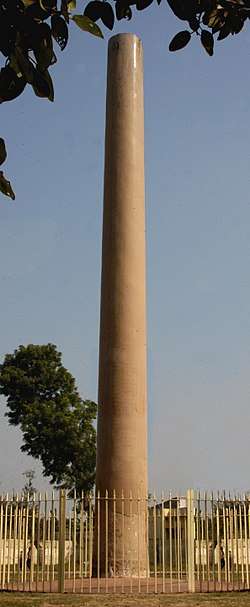 | 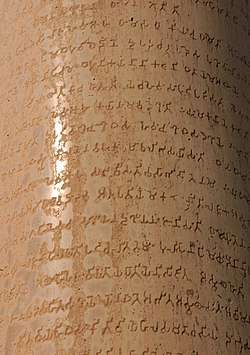 | 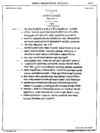 | |
| Rampurva | Located in Rampurva, Bethia Major Pillar Edicts 1-6.[7] Another pillar of Rampurva, the bull pillar, does not have inscriptions. 27°16′12″N 84°29′58″E / 27.2699°N 84.4995°E | 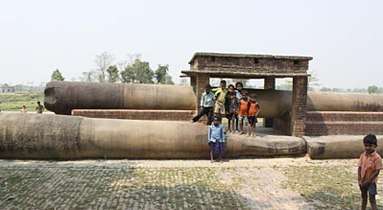 | 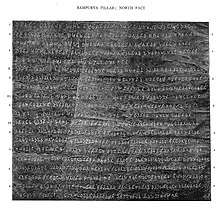 | ||
Content of the Edicts
Major Pillar Edict 1
Asoka’s principle of protection of the people.
| English translation | Prakrit in Brahmi script |
|---|---|
|
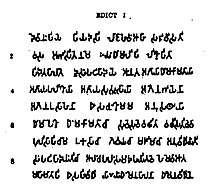 |
Major Pillar Edict 2
Defines dhamma as a minimum of sins, many virtues, compassion, liberality, truthfulness and purity.
| English translation | Prakrit in Brahmi script |
|---|---|
|
 |
Major Pillar Edict 3
Abolishes sins of harshness, cruelty, anger, pride etc.
| English translation | Prakrit in Brahmi script |
|---|---|
|
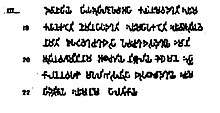 |
Major Pillar Edict 4
Deals with duties of Rajukas.
| English translation | Prakrit in Brahmi script |
|---|---|
|
 |
Major Pillar Edict 5
A list of animals and birds which should not be killed on some days, and another list of animals which have not to be killed at all occasions. Describes the release of 25 prisoners by Asoka.
| English translation | Prakrit in Brahmi script |
|---|---|
|
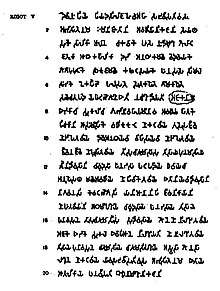 |
Major Pillar Edict 6
Dhamma Policy.
| English translation | Prakrit in Brahmi script |
|---|---|
|
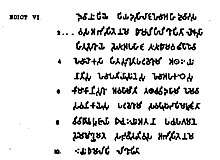 |
Major Pillar Edict 7
Works done by Asoka for Dhamma Policy. He says that all sects desire both self-control and purity of mind.
| English translation | Prakrit in Brahmi script |
|---|---|
|
Photograph of the righthand portion of the 7th Edict.  Ashoka called his pillars Dhaṃma thaṃbhā (Dharma stambha), ie "pillars of the Dharma". 7th Major Pillar Edict. Brahmi script.[8] 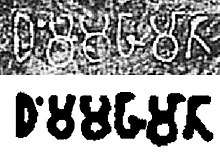 The expression Dhaṃma Mahāmātā, the "Inspectors of the Dharma", established by Ashoka. 7th Major Pillar Edict on the Delhi-Topra pillar, Brahmi script.  Expression "Dhamma Libi" ("Dharma Inscriptions"). |
Derived inscriptions in Aramaic
There are several inscriptions in Aramaic, which seem to be translations or interpretations of passages of the Major Pillar Edicts in the Aramaic language. They were not written on pillars, but on stone blocks.
| Name | Map | Location | Overview | Capital/ Close-up | Rubbing |
|---|---|---|---|---|---|
| Kandahar Aramaic inscription | Found in Old Kandahar, Afghanistan (31°36′08″N 65°39′32″E / 31.602222°N 65.658889°E) Fragment of Major Pillar Edicts 7 in Aramaic.[7][9] · [10] | 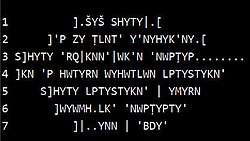 | |||
| Pul-i-Darunteh Aramaic inscription | Found in Pul-i-Darunteh, Laghman Province, Afghanistan (34°35′05″N 70°11′00″E / 34.5846°N 70.1834°E) Fragment of Major Pillar Edicts 5 or 7 in Aramaic.[7][9] |
 Pul-i-Darunteh |
 | 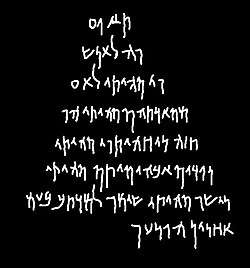 | |
See also
- Related topics
- Other similar topics
References
- 1 2 Ashoka and the decline of the Mauryas
- ↑ Yailenko, Valeri P. (1990). Les maximes delphiques d'Aï Khanoum et la formation de la doctrine du dhamma d'Asoka (in French). pp. 239–256.
- 1 2 "The Edicts of King Ashoka". Archived from the original on 14 March 2007. Retrieved 2007-03-15.
- ↑ Inscriptions of Asoka de D.C. Sircar p.30
- ↑ Handbuch der Orientalistik de Kurt A. Behrendt p.39
- ↑ Hirakawa, Akira (1993). A History of Indian Buddhism: From Śākyamuni to Early Mahāyāna. Motilal Banarsidass Publ. p. 96. ISBN 9788120809550.
- 1 2 3 4 5 6 7 8 The Geopolitical Orbits of Ancient India: The Geographical Frames of the ... by Dilip K Chakrabarty p.32
- ↑ Inscriptions of Asoka. New Edition by E. Hultzsch (in Sanskrit). 1925. p. 132, Edict No 7 line 23.
- 1 2 Handbuch der Orientalistik de Kurt A. Behrendt p. 39
- ↑ "Un troisième fragment trouvé à Kandahar (Kandahar III) est un passage du septième édit sur pilier dont le texte d'origine en mâgadhï est traduit par groupes de mots en araméen" Comptes rendus des séances - Académie des inscriptions & belles-lettres 2007, p. 1400
External links
| Wikimedia Commons has media related to Ashoka Major Pillar Edicts. |
